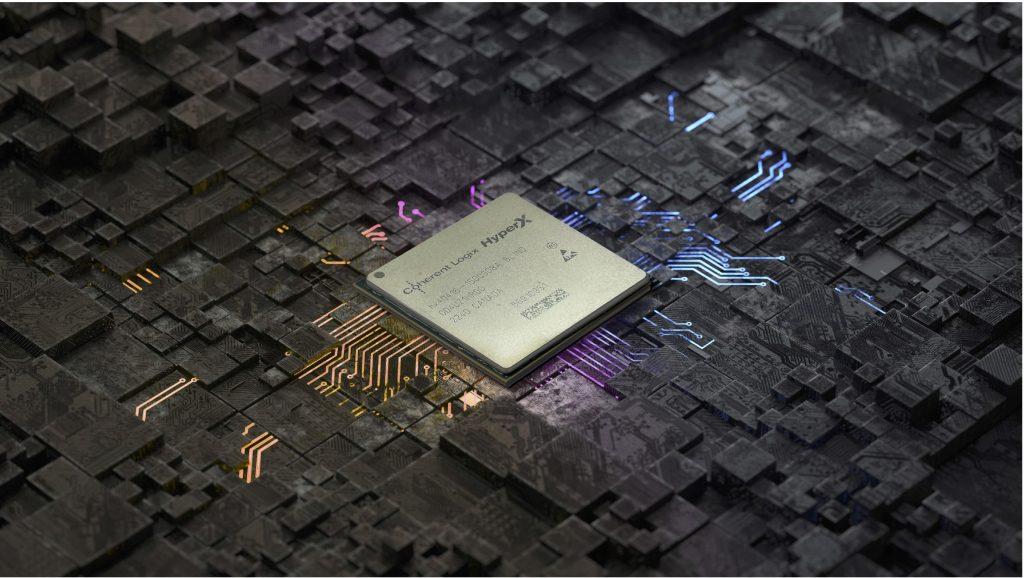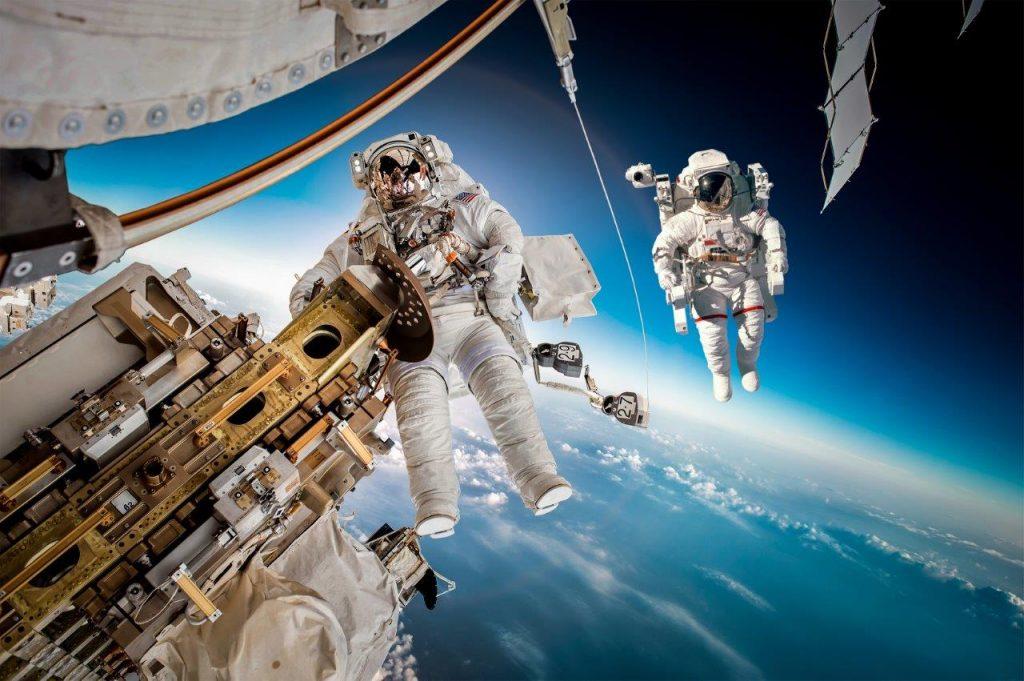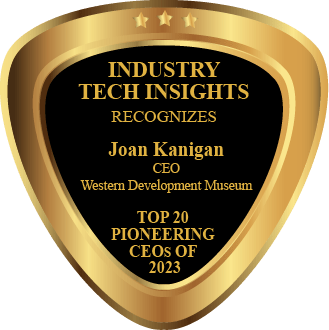
- December 27, 2025 10:30 am
- California

Joan Kanigan, CEO of the Western Development Museum (WDM), took an extraordinarily unique yet bold step as a leader in 2021. She initiated a 360o Performance Assessment to better understand how she was performing and where she needed to improve—all through an honest and critical feedback system to know where she was standing as a leader and a manager. “My intent with this performance review was to ensure I am serving the WDM and those I am responsible for to the best of my abilities,” she says. “The things that my staff felt I was doing most effectively include listening to them at all levels, using staff input to make decisions; making people comfortable to bring issues, opinions, and questions forward; valuing others’ thoughts and opinions; and identifying needs and opportunities for organizational improvement.”
The above is just the tip of the iceberg. She has also been hailed for empowering her staff to make many necessary and positive transformations since she became CEO. Joan is seen as respectful, committed to working with all levels of staff, thoughtful, considerate, compassionate, and kind. “I always strive to be open and proactive in my communications; to share information and respond to questions in timely way,” says Joan. “The assessment also identified areas for improvement, so I’m currently focusing on developing business plans that work across all museum functions and our four museum locations; improving accountability by clearly articulating measurable results at all levels of the organization and working on my coaching skills to better support my direct reports.”
Becoming A Strong Leader
For Joan, leadership is more than just a title and she particularly likes Brené Brown’s definition of a leader as “anyone who holds themselves accountable for finding potential in people and processes1.” Despite being in senior executive roles for most of her career, it wasn’t until Joan started studying leadership that she began to see herself as a leader. “For me, it’s not about keeping the status quo, or change for the sake of change, but working with my staff to create a museum that’s deeply embedded in our communities and has a positive impact ons everyone we serve,” she says. “That’s been my greatest motivator – the desire to be a place where everyone can see themselves reflected in the Museum. Where people can connect with and learn from each other in ways that build understanding and empathy.” A sense of belonging is a basic human need and contributes to health, happiness, and community cohesion. This sense of belonging is something museums can offer.
1Braving the Wilderness by Brené Brown
Joan aspires to be a servant-leader and would describe her leadership style as very consultative. “I like to work closely with my team as I believe that we come up with better ways to engage with, and serve our communities, when we’re working together,” she elucidates. “I encourage my staff to disagree with my ideas if they believe that they are not in the best interest of the Museum and support them when they come up with innovative ways to improve our processes and services. So much of the WDM’s recent successes is because of our amazing staff.”
Joan strongly believes museums exist to serve their communities. “As the human history museum for Saskatchewan, it is important that we collect and share the collective memories of our diverse communities and histories,” explains Joan. “We aspire to represent Saskatchewan’s diversity in all aspects of the WDM. We want people to see themselves and their histories reflected in our spaces and to create opportunities for engagement, learning and building empathy within the communities we serve.” To achieve this, the WDM is focusing on adding the stories and histories of underrepresented communities into its spaces.
Creating A Brilliant Space
Decolonizing museum spaces has been a significant trend since the Truth and Reconciliation Commission of Canada released its 94 Calls to Action. This, along with becoming more inclusive spaces that reflect all of society’s diversity, is important if museums are going to remain relevant and viable long into the future. Joan’s work is about helping people feel seen and heard. By sharing diverse histories and experiences, she hopes to build understanding and empathy between people with different lived experiences so that everyone can understand each other better.
Most recently, the WDM co-curated Wapaha Sk̄a Oyate: Living Our Culture, Sharing Our Community at Pion-Era, 1955 – 69 with Whitecap Dakota First Nation. This exhibit was developed in the spirit of Reconciliation and partnership. “The exhibit explores each of our perspectives on our shared past as it relates to Whitecap Dakota First Nation’s involvement in the WDM Saskatoon’s annual summer show known as Pion-Era https://wdm.ca/exhibits/whitecap/,” says Joan. “When the exhibit opened, Whitecap Dakota First Nation honoured us with a Grand Entry which included choosing and playing an honour song for the exhibit.”
Integrating technology into exhibits, programming, and the visitors’ experience is another big trend in the museum sector. Utilizing technology for virtual exhibits and programs is allowing the WDM to reach new audiences and increase accessibility in ways that weren’t possible even a few years ago. Joan is looking forward to WDM’s future. They have recently restructured to bring more focus and resources to their community engagement efforts, including creating positions specifically focused on engaging with Indigenous communities and better resourcing the WDM’s volunteer engagement program. “Our work with Indigenous communities is especially important and we are striving to be seen as a leader in how museums can engage meaningfully in Canada’s Truth and Reconciliation efforts,” she adds.

The Unique Solutions
The company offers powerful Systems on Chips (SoCs) and a software suite for creating customized solutions. And the current flagship is HyperX Midnight, a radiation-hardened supercomputer class SoC designed for use in LEO, MEO, and GEO (low-, middle-, and geosynchronous earth orbit) satellites.
HyperX Midnight, soon after its release, became the most advanced space processor available, with roughly four times the computing throughput at half the power demand of competitive chips.
“This is a significant step, as performance and power consumption control the magnitude of a satellite. We put enormous performance in a small package with low power obligations, so our customers can use much smaller satellite busses (chassis) which conserves millions in launch budgets,” says Walt. Another key feature of Coherent’s HyperX multi-chip modules compared to its competitors is that its chips are C-programmable and use familiar tools and debugging processes. “The solutions can be built on our chip in about 6 months whereas competitive FPGA offerings usually require 24 months of development time using complex hardware development languages and a very difficult process called timing closure,” he adds.
Coherent Logix’s SoCs are also completely reprogrammable, even in space, and can modify tasks in less than 50ns (nanoseconds). These two elements combine to create a huge advantage. Coherent Logix can make four products in the time our competitors take to build just one, and we can continuously enhance those products even if they are in orbit around the Earth.
These attributes herald back to Coherent Logix’s patented invention: the HyperX fabric. And this fabric is common to all Coherent Logix’ chips – both Space-qualified and terrestrial – so these advantages are available whether users are building a satellite, 5G cellular, secure networks, AI platforms, or 8K video encoders. Coherent Logix has served the Space 2.0 and Defense markets for 15 years. High-performance computing (HPC) with low power draw, on-orbit programmability, and ease of modular multimodal MCM design are the keys to success in these markets according to Walt.
The Leader who Makes the Difference
Walt Gall, Ph.D. serves as CEO on Coherent Logix’s executive management team. He is a business leader who builds world-class AI teams, products, and strategic partnerships for top-tier start-ups (Saffron, Intel acquisition) and large corporations (Amazon Devices, Meta (formerly FB).
As CEO of Coherent Logix, the leader in low-power, high-performance C- programmable processors for the embedded systems market, he recently helped guide the company through a funding initiative that raised $85 million.
Under Walt’s leadership, in early 2023 Coherent Logix launched HyperX Midnight, the world’s most advanced space processor, with roughly four times the computing throughput at half the power demand of competitive chips. Coherent Logix is currently in its fourth generation of HyperX processors for Space 2.0 and Defense, Connected Devices, and Media & Communications industries. The company has been granted more than 375 patents and 125 patents are pending.
Over the past decade, Walt has held various leadership roles on executive teams, including Amazon Alexa AI, Meta’s AR/VR and AI divisions, and Intel AI, with responsibilities for annual operational planning, developing a 3-year strategy, and managing more than $500M R&D and production budgets. He led product launches on conversational AI voice assistants on industry-leading consumer and social media devices with cloud-to-edge embedded applications and the development of several enterprise decision-support AI/IOT solutions in wellness, health, hi-tech, and insurance sectors.
Walt’s leadership style is centered on the customer and making data-informed, timely decisions. This customer-centric team approach is critical as the company scales its products and continues to expand its channel partnerships. “I’m referring to our direct customers and strategic partners, our leadership team and employees, and our Board of Directors,” he adds. “We have a collective interest in growing revenue and partnering on developing and commercializing products that have a meaningful impact on society.”
Armed with this mindset, Walt and the rest of the leadership team have skillfully guided Coherent Logix into hypergrowth markets: Space 2.0, cybersecurity, connected devices, media and communications.

Towards the Future
Coherent Logix is adding a cloud-based capability for new customers, universities, and the Maker/open-source community to work with their development tools and hardware. With older von Neumann microprocessor architecture designs and today’s programmable hardware, the software development process is so tedious that it can take 24-36 months for a customer to develop a solution e.g., a WiFi router. Coherent Logix microprocessors, however, have C-programmability and use standard software development processes. They also offer a cycle-accurate simulation platform. These advantages enable Coherent Logix to build solutions in just six months and continue to reprogram or reconfigure as needed to support their product and customer roadmaps with new software-defined functions or as standards evolve. This, combined with the hardware/software co-design process the company uses to build their System on Chips (SoCs), brings the power of digital transformation to the design and use of digital processors – amplifying both the pace of innovation and the competitive advantages of Coherent Logix.
For the near future, Walt is striving towards building highly functioning, distributed teams to bring the most disruptive products to market he has worked on, i.e., a new class of low-power, reprogrammable, high-performance computing devices. Coherent Logix is enabling customers to “redefine hardware as software” (which is also the company’s tagline) to meet the market demand for the flexibility, extensibility, and scalability of software-defined hardware systems and their small SWaP requirements, ranging from space satellites to consumer devices. Coherent Logix’s HyperX architecture provides a paradigm shift in hardware-software co-design from embedded systems to the cloud and delivers a more cost-effective and scalable software-defined device strategy. With its compute and memory co-localized, an event-oriented, parallel processing fabric, low power profile, and C-programmability, this has a 2-4x improvement in the time it takes to develop and launch products. This multi-faceted value proposition extends product customer lifetime value economic models, increasing the ROI for its ODM and OEM partners and customers. Accomplishing these product revenue growths and customer-centric goals will lead naturally to the longer-term goal of positioning Coherent Logix for a successful market exit for its shareholders.
“The future requires low-power, high performance computing for next generation connected devices – it will be everywhere we find a sensor, a camera, a robot, or smart device. As large as the Space 2.0 revolution is, the terrestrial edge and embedded devices will eclipse it by orders of magnitude,” concludes Walt. “We must be as efficient with power as possible. It has a cost to our planet to produce, and it turns into heat when you use it. If we want to preserve our planet, smart everything must become smart, efficient everything.”

" That’s been my greatest motivator – the desire to be a place where everyone can see themselves reflected in the Museum. "
Joan Kanigan
CEO